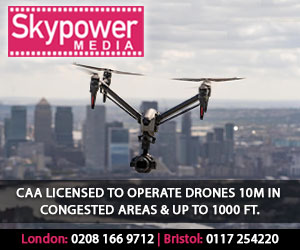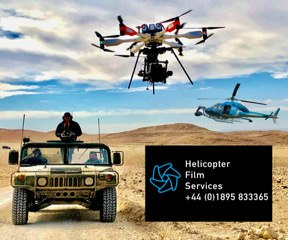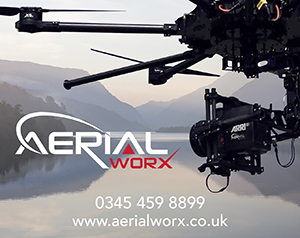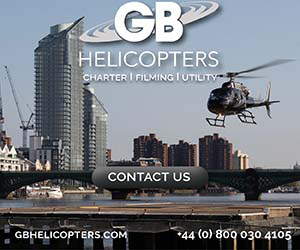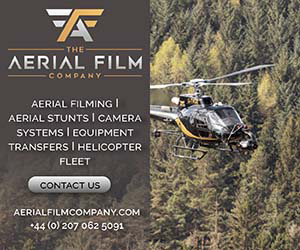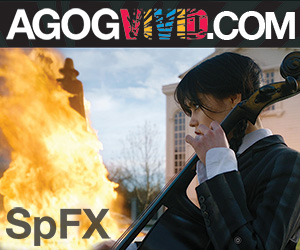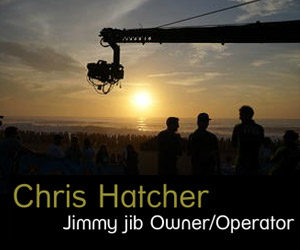Broadcast News
01/07/2015
Versatile Drones
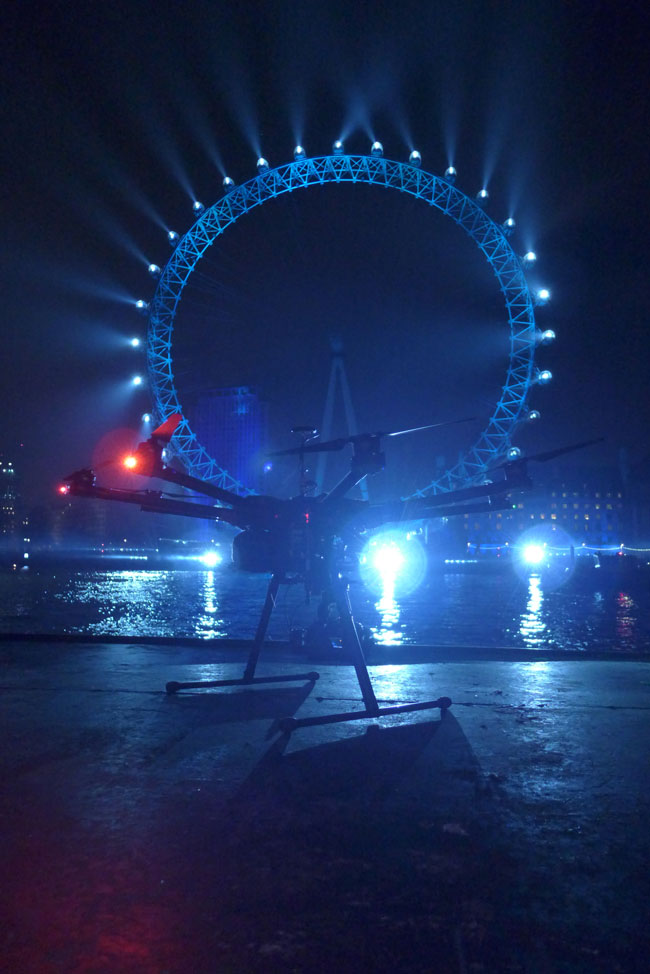
Over recent years, Drones have become increasingly present and increasingly versatile, able to deal with a wider range of climatic conditions and carry heavier cameras. Drones are increasingly trusted to work on more projects and relied upon to deliver guaranteed results.
Extreme Facilities regularly customise and enhance the capabilities of all their equipment from Minicams through to Drones to deal with prevailing conditions or mitigate risk and reliably undertake some of the more challenging projects. This is a short summary of working with drones, fireworks, water, and a very congested RF spectrum.
Live HD coverage of the 2015 New Year's Eve Fireworks for the BBC required the Drone to fly safely, but as close as possible, to the launching and exploding fireworks without the Drone taking a direct hit from a firework, or being effected by a blast or a cascade of burning debris.
Several board meetings and presentations took place with all stakeholders to prove the safety case, with the BBC taking very positive and productive steps to help the flight take place against some very concerned opposition. We are especially grateful to Lawrence Hay of the CAA who very helpfully attended the final meeting and helped to confirm our safety case to the uncertain stakeholders.
The problems formed quite a list and the team at Extreme Facilities worked through the list methodically.
Fire: Caused by falling fireworks posed a risk as they could nestle perfectly into the drones electronics and cause damage to wiring and the control systems with inevitable consequences. The solution was to fit a lightweight tailored Kevlar/PBI fabric fireproof jacket to protect all electronics and cabling.
Visibility and Orientation: The drone, flying in front of one of the world's largest and most intense firework displays, was expected to present a problem as it would become virtually invisible against a wall of fireworks and a huge lighting display. The solution became an enhanced and programmable system of onboard lighting. In addition to being very powerful, the lights were also programmed to slowly pulse and fade to distinguish the drone from the background of fireworks. This gave the drone a very distinct signature which could be identified clearly in front of the intense and dynamic display.
Location: To further ensure confirmation of the drone's location, a GPS tracker with real time tracking was fitted and fed to a laptop at the launch site. The laptop display also had a customised map which indicated the firework launch barges and other key landmarks.
Security for control: This was a big issue and normally uses the 2.4Ghz band, a very heavily used part of the RF spectrum. We were warned that on the night the whole RF spectrum would be absolutely swamped with users, including the emergency services, security services, spectators, static wifi and security systems, additional security cameras, and the BBC OB Unit. We used a spectrum analyzer to check for fixed transmissions in advance of the event and again immediately before flying the event. Our Live transmission was on a licensed frequency so there should be no problem there; the drone's camera feed was split and duplicated so an HD feed could be sent clean to the OB and a second was down converted and sent via an on-screen telemetry display to Andrew Schaale, the Pilot for Extreme Facilities. All picture transmission and control for the drone was tested in advance of the event at full range and worked perfectly throughout the event.
The control system we chose to use was a Jeti Dual Link intelligent spread spectrum system modified to work as Dual Path, sending two control signals on separate frequencies and twin return telemetry all in the 2.4Ghz band. Using this system we managed to avoid any negative effect of the very heavy RF useage on the night. (Coincidentally, we did test another manufacturer's control system during the event and found transmission only worked for 30m in the prevailing conditions).
Water: Recovery from water, should the worst happen even after all the precautions, weighed heavily on the minds of the Westminster Council and they had serious concerns they did not want adverse publicity through photography of a downed drone being recovered by divers as such pictures could overshadow an otherwise successful event. Extreme Facilities designed a proprietary solution which included waterproof illumination and an automatic buoyancy system programmed to inflate immediately upon contact with water. This would enable the dedicated water recovery team standing by in a RHIB to identify and immediately recover the drone from the water surface without delay should this be required. All went well and the drone made a safe return without incident and transmission throughout the event worked perfectly back to the BBC OB unit.
To test our drones for other projects, we have undertaken testing in commercial freezers at –20ºC, developed water landing drones for work at sea, and protective frames to avoid collisions with dense foliage in Jungles. We have now flown on every continent and many oceans worldwide, including everywhere the Top Gear specials and series have taken us in the past five years. Modifications we have created for this project and previously have helped us to safely undertake each task which may not have received CAA or stakeholder permission had the additional precautions not been incorporated.
www.extremefacilities.com
Extreme Facilities regularly customise and enhance the capabilities of all their equipment from Minicams through to Drones to deal with prevailing conditions or mitigate risk and reliably undertake some of the more challenging projects. This is a short summary of working with drones, fireworks, water, and a very congested RF spectrum.
Live HD coverage of the 2015 New Year's Eve Fireworks for the BBC required the Drone to fly safely, but as close as possible, to the launching and exploding fireworks without the Drone taking a direct hit from a firework, or being effected by a blast or a cascade of burning debris.
Several board meetings and presentations took place with all stakeholders to prove the safety case, with the BBC taking very positive and productive steps to help the flight take place against some very concerned opposition. We are especially grateful to Lawrence Hay of the CAA who very helpfully attended the final meeting and helped to confirm our safety case to the uncertain stakeholders.
The problems formed quite a list and the team at Extreme Facilities worked through the list methodically.
Fire: Caused by falling fireworks posed a risk as they could nestle perfectly into the drones electronics and cause damage to wiring and the control systems with inevitable consequences. The solution was to fit a lightweight tailored Kevlar/PBI fabric fireproof jacket to protect all electronics and cabling.
Visibility and Orientation: The drone, flying in front of one of the world's largest and most intense firework displays, was expected to present a problem as it would become virtually invisible against a wall of fireworks and a huge lighting display. The solution became an enhanced and programmable system of onboard lighting. In addition to being very powerful, the lights were also programmed to slowly pulse and fade to distinguish the drone from the background of fireworks. This gave the drone a very distinct signature which could be identified clearly in front of the intense and dynamic display.
Location: To further ensure confirmation of the drone's location, a GPS tracker with real time tracking was fitted and fed to a laptop at the launch site. The laptop display also had a customised map which indicated the firework launch barges and other key landmarks.
Security for control: This was a big issue and normally uses the 2.4Ghz band, a very heavily used part of the RF spectrum. We were warned that on the night the whole RF spectrum would be absolutely swamped with users, including the emergency services, security services, spectators, static wifi and security systems, additional security cameras, and the BBC OB Unit. We used a spectrum analyzer to check for fixed transmissions in advance of the event and again immediately before flying the event. Our Live transmission was on a licensed frequency so there should be no problem there; the drone's camera feed was split and duplicated so an HD feed could be sent clean to the OB and a second was down converted and sent via an on-screen telemetry display to Andrew Schaale, the Pilot for Extreme Facilities. All picture transmission and control for the drone was tested in advance of the event at full range and worked perfectly throughout the event.
The control system we chose to use was a Jeti Dual Link intelligent spread spectrum system modified to work as Dual Path, sending two control signals on separate frequencies and twin return telemetry all in the 2.4Ghz band. Using this system we managed to avoid any negative effect of the very heavy RF useage on the night. (Coincidentally, we did test another manufacturer's control system during the event and found transmission only worked for 30m in the prevailing conditions).
Water: Recovery from water, should the worst happen even after all the precautions, weighed heavily on the minds of the Westminster Council and they had serious concerns they did not want adverse publicity through photography of a downed drone being recovered by divers as such pictures could overshadow an otherwise successful event. Extreme Facilities designed a proprietary solution which included waterproof illumination and an automatic buoyancy system programmed to inflate immediately upon contact with water. This would enable the dedicated water recovery team standing by in a RHIB to identify and immediately recover the drone from the water surface without delay should this be required. All went well and the drone made a safe return without incident and transmission throughout the event worked perfectly back to the BBC OB unit.
To test our drones for other projects, we have undertaken testing in commercial freezers at –20ºC, developed water landing drones for work at sea, and protective frames to avoid collisions with dense foliage in Jungles. We have now flown on every continent and many oceans worldwide, including everywhere the Top Gear specials and series have taken us in the past five years. Modifications we have created for this project and previously have helped us to safely undertake each task which may not have received CAA or stakeholder permission had the additional precautions not been incorporated.
www.extremefacilities.com
More Aerial Filming Stories
31/01/2023
Flying Features Relies On LiveU
For the third year in a row, the Santos Tour Down Under cycling race was broadcast live from the sky by Australian aerial filming company Flying Featu
Flying Features Relies On LiveU
For the third year in a row, the Santos Tour Down Under cycling race was broadcast live from the sky by Australian aerial filming company Flying Featu
02/06/2017
Live Video Streaming From Drones
Drones provide a mechanism for streaming compelling video that other methods cannot compete with, either from an infrastructure or cost prospective. W
Live Video Streaming From Drones
Drones provide a mechanism for streaming compelling video that other methods cannot compete with, either from an infrastructure or cost prospective. W
26/04/2017
360 Design Announce Flying EYE
360 Designs has announced the launch of Flying EYE, a groundbreaking, 6K, broadcast quality, live streaming VR drone. According to the company the ann
360 Design Announce Flying EYE
360 Designs has announced the launch of Flying EYE, a groundbreaking, 6K, broadcast quality, live streaming VR drone. According to the company the ann
12/04/2017
Festival Recognition For Shetland My Land, My Home
Article contributed by Thomas Haywood, from Thomas Haywood Aerial Photography. Recently, I entered Shetland My Land, My Home into several film festiva
Festival Recognition For Shetland My Land, My Home
Article contributed by Thomas Haywood, from Thomas Haywood Aerial Photography. Recently, I entered Shetland My Land, My Home into several film festiva
31/03/2017
Drone Use In Construction Industry - Part 1
In the first of a two-part report into drones and construction, Jim Meehan, an aerial imaging specialist at SkyHeld Cameras, asks if data quality or s
Drone Use In Construction Industry - Part 1
In the first of a two-part report into drones and construction, Jim Meehan, an aerial imaging specialist at SkyHeld Cameras, asks if data quality or s
31/03/2017
Drone Use In Construction Industry - Part 2
In the second of a two-part report into drones and construction Jim Meehan, aerial imaging specialist at SkyHeld Cameras, rounds up the reasons that d
Drone Use In Construction Industry - Part 2
In the second of a two-part report into drones and construction Jim Meehan, aerial imaging specialist at SkyHeld Cameras, rounds up the reasons that d
30/03/2017
GoPro Karma Now Available In The UK
GoPro have announced that it's complete Karma system is now available at selected online and high street retailers. Karma features a compact design an
GoPro Karma Now Available In The UK
GoPro have announced that it's complete Karma system is now available at selected online and high street retailers. Karma features a compact design an
08/03/2017
Hovercam Goes On The Hunt For Sharks
Hovercam's Benet Allen went shark-baiting with the team from ITV's Fishing Impossible... They told us it was going to be straightforward, if a bit sme
Hovercam Goes On The Hunt For Sharks
Hovercam's Benet Allen went shark-baiting with the team from ITV's Fishing Impossible... They told us it was going to be straightforward, if a bit sme
23/01/2017
Producing Live UHD/4K Aerial Footage On Budget
Just a few years ago, the only option of producing professional, dynamic live aerial footage was renting a turbine driven helicopter equipped with a h
Producing Live UHD/4K Aerial Footage On Budget
Just a few years ago, the only option of producing professional, dynamic live aerial footage was renting a turbine driven helicopter equipped with a h
20/01/2017
BFV's Big Interview: BeyondHD
With 20 years specialising in aerial and vehicle-based stabilised remote head filming equipment and crew hire – from manned aerial filming and class l
BFV's Big Interview: BeyondHD
With 20 years specialising in aerial and vehicle-based stabilised remote head filming equipment and crew hire – from manned aerial filming and class l






